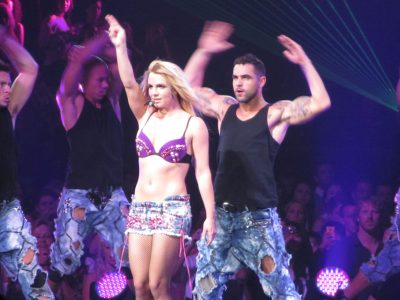WP_Post Object
(
[ID] => 2565
[post_author] => 2
[post_date] => 2021-05-04 16:36:54
[post_date_gmt] => 2021-05-04 16:36:54
[post_content] => As their home country is engulfed by a raging second wave of the pandemic, Indians living abroad feel helpless and guilty.
The live-in domestic help at my parents’ house in Mumbai got COVID-19. My neighbor’s entire family was infected. So was my husband’s elderly aunt in Ahmedabad. My friend's father was hospitalized for 12 days. Everyone in India knows someone who has been affected by the raging second wave of the pandemic.
And no wonder—as of today, India is the only country other than the U.S. to have 20 million coronavirus cases, and that is likely a vast undercount.
Crematoriums across India have so many bodies piling up that some are running out of wood to build funeral pyres. At Mumbai hospitals there are long waiting lists for beds; at one, the chief medical officer died of complications from COVID-19. She was 51 years old.
There is a thriving black market for medical supplies. In Mumbai, an oxygen concentrator is selling for Rs. 75,000 to Rs. 150,000 ($1,000 to $2,000) while in the capital city of Delhi, which has been even harder hit by the pandemic, it can cost as much as Rs. 250,000. ($3,400)—in a country where the monthly per capita income just before COVID hit was less than $150. But even at these inflated prices, demand far outpaces supply.
All over social media, people are posting their desperation, sharing shaky videos and pleading words, begging for a hospital bed, for oxygen, for someone to come and help. More than 100 Indian journalists have died of COVID, with one, Vinay Srivastava, live tweeting his declining oxygen levels until he died. Meanwhile, the Modi government ordered Facebook, Twitter, and Instagram to take down posts critical of its handling of the pandemic.
We hear about the tragic stories of the sick and dying in India’s cities, but almost nothing from the rural areas, where roughly two-thirds of the population lives.
Meanwhile New York City, where I live, is opening up. It’s been opening up. Indoor dining. Theaters. Gyms. Now the CDC says the vaccinated don’t need to wear masks outdoors. After a year of living in sweats, I went shopping for sundresses last week. Awkwardly, we hug each other again.
In New York City, a return to normal
On a warm Saturday in April, Mayor Bill DeBlasio made a surprise appearance at the Brooklyn Children’s Museum where we were celebrating Holi, the Indian festival of color, with live musicians, dancers, and samosas for guests to snack on.
During the last half hour of our time slot, which was limited to comply with COVID precautions, the mayor and a dhol player led a procession to the park next door. We played Holi, flinging colorful powder in the air and smearing each other’s clothes and hair with red, green, yellow, and pink, while catchy Bollywood songs playing in the background.
But even as I laughed and shrieked with friends, grateful that the receding threat of COVID had allowed me to enjoy my favorite festival, I celebrated with a clammy feeling of guilt. How could I turn my face to the sun while my country was being battered by a vicious second surge of the virus?
How India's second wave happened
About 10 days before I celebrated Holi in Brooklyn, the Kumbh Mela took place in the northern Indian city of Haridwar. Government authorities estimate that approximately 3.5 million Hindu pilgrims traveled to the banks of the holy Ganga River for the days-long festival, despite a sharp increase in COVID cases in the country—and amid calls for the government to cancel the event.
But Narendra Modi, the Hindu nationalist prime minister, had already declared victory over the pandemic at the World Economic Forum’s Davos Dialogue in January. While the rest of the world warned that the number of cases was set to increase precipitously, Modi boasted that India had not only looked after its own population but was also saving lives by exporting 60 million doses of domestically produced vaccines around the world.
Even as the country was making global front-page headlines for its rising infection numbers, Modi and his home minister appeared without masks at massive political rallies leading up to state elections in West Bengal, where Modi expressed admiration for the size of the crowds. (The election results were announced Monday and Modi’s party, the BJP, suffered a major loss in the state.)
Last week, the Madras High Court handed down severe criticism of the Election Commission of India (ECI) for permitting political rallies during the pandemic. In response to a claim from a spokesperson for the ECI that COVID safety protocols had been enforced at the mass rallies, the chief justice asked, "Were you on another planet when political rallies were being held?" The justice underlined his outrage by adding that the ECI was “singularly responsible” for the massive second wave of COVID-19 in India, adding that commission officials “should be booked on murder charges” for sponsoring mass political rallies that turned into super spreader events.
Living in fear
At around the same time in Mumbai, the older sister of a close friend was running ragged trying to take care of her family. Her husband works at the airport and the docks, in “import-export.” His job is essential, since he oversees the import of critical supplies into the country, including oxygen, which is in desperately short supply. A colleague in the customs division has already succumbed to COVID-19. He himself is not fully vaccinated.
“He’s endangering himself every day, he has to travel for his job, and he can’t get the second dose, because they’ve run out,” my friend said.
My friend’s sister lives in a multi-generational home with her in-laws; recently, two of her in-laws’ cousins also came to stay with them. For a time, there were four elderly people at home, with 10 human beings squeezing into the three-bedroom apartment. Last week, one of the cousins, who was in her 80s, tested positive. One of my friend’s nieces has juvenile diabetes, which puts her at increased risk from the virus; her sister asked the elderly cousin to isolate at her own house. The woman died the next day.
Karna Basu’s maternal grandmother passed away before the second surge hit. His grandmother had COVID, but it was the cancer that took her life. The COVID made it hard for her to access treatment, though. They were close, and he regrets not being able to travel from New York, where he lives, to see her before she passed.
The news from his wife’s family is worse. For the last several weeks, the WhatsApp group of her extended family in Ahmedabad, Gujarat, has been bringing news of two new deaths from the virus each week.
“The family is getting depleted,” Basu says. “It’s so painful you don’t even want to think about it.”
An old classmate of mine in Mumbai is on a WhatsApp group full of wealthy professionals—the kind of people who, in India’s deeply unequal society, usually know someone in authority and thus are able to jump the queue. But even they are having trouble accessing resources.
“I’m reading their messages of desperation—they’re not able to get their hands on medicine and oxygen,” my classmate told me over the phone. “If they can’t do it, what is happening to the middle class and lower middle class in the country?”
When she had to get a hospital bed for her cousin, who tested positive a week before the state of Maharashtra went into lockdown, my friend realized just how dire the situation had become.
“We were hearing that there were no beds available, but only when I started calling hospitals did I realize how bad it was,” she said. The only reason they were able to secure a bed, she added, was because they knew someone high up in a hospital.
Even before the world had heard of COVID-19, India ranked 155 out of 167 countries in hospital bed capacity.
A New York friend spent a recent morning trying to find either medical oxygen or an oxygen concentrator, a device that take in ambient air and increases its oxygen concentration by stripping away the nitrogen, for a former employee of his in Delhi. He made 23 calls, only to be put on waitlist after waitlist. Eventually the employee found a hospital bed; she is now on a ventilator.
Aid is now coming into India now from several countries, including the United States, but President Joe Biden has been criticized for hoarding vaccines, while other wealthy countries continue to store vaccines in excess of their needs. In India, meanwhile, many states have run out.
My New York friend is angry at Modi’s government for not doing enough. “It’s all fucked up,” he says. “Not stockpiling enough vaccines is fucked up. Not having more structured lockdowns is fucked up. Silencing anyone who says anything bad about them is fucked up.”
Last year, the central government tried to force independent news outlets to submit their pandemic coverage to authorities for approval before publication. Just last month Yogi Adityanath, the chief minister of Uttar Pradesh and a key Modi ally, directed police to confiscate the property of anyone who posted about oxygen shortages online.
Meanwhile an increasing number of countries have limited or suspended travel from India, with Australia even criminalizing its own citizens for returning home from the subcontinent. Indians who live abroad can’t go back to be with loved ones during their last days or mourn with their families.
Ann, an American woman married a South Indian man, is now barred from traveling to northern India to finalize the adoption of a teenage girl. This would have been the family’s second adoption, and fourth child. Meanwhile, the young girl they were supposed to bring back to Texas this month is having a hard time in her orphanage. She’s the oldest one there, close to aging out of care. Every time they speak on the phone, Ann says, the girl is either crying or holding back tears.
“The only thing I have to say to you is come get me,” she says on their weekly calls. “When are you coming?”
Sending money is the only thing you can do
On the WhatsApp groups that I’m a part of, we exchange the names of aid organizations on the ground. “Is it vetted?” people ask. “Can you send me a list of reputable groups?”
When you’re 9,000 miles away, sending money is about the only thing you can do.
Meanwhile, I got my second dose of the vaccine last week. In New York, the tulips are blooming. Over the weekend, I met friends for an outdoor lunch and then enjoyed the sun on my shoulders at a nearby park. Around us picnickers spread out on blankets; a guitarist riffed nearby. I felt the grass brushing my bare legs and played mock battles with my son. The shoulder where I got the jab was still sore, and I was glad for the pain.
Here is a list of 12 places you can donate to help India.
[post_title] => I celebrated Holi in New York while in India friends and family begged for hospital beds
[post_excerpt] => The author's joy in celebrating the Hindu festival of Holi, which in her adopted city of New York coincided with spring weather and a recovery from the pandemic, was tempered by guilt and disquiet over the raging second wave of the pandemic in her home country.
[post_status] => publish
[comment_status] => closed
[ping_status] => open
[post_password] =>
[post_name] => i-celebrated-holi-in-new-york-while-friends-and-family-begged-for-hospital-beds-in-india
[to_ping] =>
[pinged] =>
[post_modified] => 2024-08-28 21:15:13
[post_modified_gmt] => 2024-08-28 21:15:13
[post_content_filtered] =>
[post_parent] => 0
[guid] => https://conversationalist.org/?p=2565
[menu_order] => 208
[post_type] => post
[post_mime_type] =>
[comment_count] => 0
[filter] => raw
)

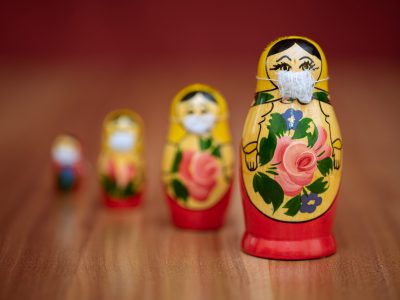
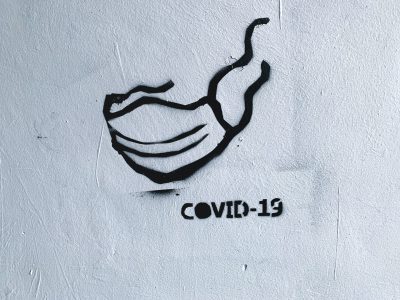
 A still from the film shows Bosniaks taking refuge at the UN Dutch peacekeeper base in Srebrenica.[/caption]
In 1993, at the dedication of the U.S. Holocaust Museum, Elie Wiesel made an
A still from the film shows Bosniaks taking refuge at the UN Dutch peacekeeper base in Srebrenica.[/caption]
In 1993, at the dedication of the U.S. Holocaust Museum, Elie Wiesel made an 
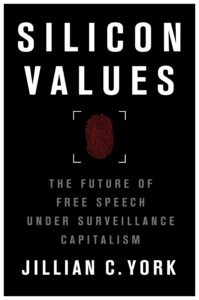 During the decade prior to the 2011 uprising, Egypt saw a blogging boom, with people from diverse socio-economic backgrounds writing outspoken commentary about social and political issues, even though they ran the risk of arrest and imprisonment for criticizing the state. The internet provided space for discussions that had previously been restricted to private gatherings; it also enabled cross-national dialogue throughout the region, between bloggers who shared a common language. Public protests weren’t unheard of—in fact, as those I interviewed for the book argued, they had been building up slowly over time—but they were sporadic and lacked mass support.
While some bloggers and social media users chose to publish under their own names, others were justifiably concerned for their safety. And so, the creators of “We Are All Khaled Saeed” chose to manage the Facebook page using pseudonyms.
Facebook, however, has always had a policy that forbids the use of “fake names,” predicated on the misguided belief that people behave with more civility when using their “real” identity. Mark Zuckerberg famously claimed that having more than one identity represents a lack of integrity, thus demonstrating a profound lack of imagination and considerable ignorance. Not only had Zuckerberg never considered why a person of integrity who lived in an oppressive authoritarian state might fear revealing their identity, but he had clearly never explored the rich history of anonymous and pseudonymous publishing.
In November 2010, just before Egypt’s parliamentary elections and a planned anti-regime demonstration, Facebook, acting on a tip that its owners were using fake names, removed the “We are all Khaled Saeed” page.
At this point I had been writing and communicating for some time with Facebook staff about the problematic nature of the policy banning anonymous users. It was Thanksgiving weekend in the U.S., where I lived at the time, but a group of activists scrambled to contact Facebook to see if there was anything they could do. To their credit, the company offered a creative solution: If the Egyptian activists could find an administrator who was willing to use their real name, the page would be restored.
They did so, and the page went on to call for what became the January 25 revolution.
A few months later, I joined the Electronic Frontier Foundation and began to work full-time in advocacy, which gave my criticisms more weight and enabled me to communicate more directly with policymakers at various tech companies.
Three years later, while driving across the United States with my mother and writing a piece about social media and the Egyptian revolution, I turned on the hotel television one night and saw on the news that police in Ferguson, Missouri had shot an 18-year-old Black man, Michael Brown, sparking protests that drew a disproportionate militarized response.
The parallels between Egypt and the United States struck me even then, but only in 2016 did I become fully aware. That summer, a police officer in Minnesota pulled over 32-year-old Philando Castile—a Black man—at a traffic stop and, as he reached for his license and registration, fatally shot him five times at close range.
Castile’s partner, Diamond Reynolds, was in the passenger’s seat and had the presence of mind to whip out her phone in the immediate aftermath, streaming her exchange with the police officer on Facebook Live.
Almost immediately, Facebook removed the video. The company later restored it, citing a “technical glitch,” but the incident demonstrated the power that technology companies—accountable to no one but their shareholders and driven by profit motives—have over our expression.
The internet brought about a fundamental shift in the way we communicate and relate to one another, but its commercialization has laid bare the limits of existing systems of governance. In the years following these incidents, content moderation and the systems surrounding it became almost a singular obsession. I worked to document the experiences of social media users, collaborated with numerous individuals, and learned about the structural limitations to changing the system.
Over the years, my views on the relationship between free speech and tech have evolved. Once I believed that companies should play no role in governing our speech, but later I shifted to pragmatism, seeking ways to mitigate the harm of their decisions and enforce limits on their power.
But while the parameters of the problem and its potential solutions grew clearer, so did my thesis: Content moderation— specifically, the uneven enforcement of already-inconsistent policies—disproportionately impacts marginalized communities and exacerbates existing structural power balances. Offline repression is, as it turns out, replicated online.
The 2016 election of Donald Trump to the U.S. presidency brought the issue of content moderation to the fore; suddenly, the terms of the debate shifted. Conservatives in the United States claimed they were unjustly singled out by Big Tech and the media amplified those claims—much to my chagrin, since they were not borne out by data. At the same time, the rise of right-wing extremism, disinformation, and harassment—such as the spread of the QAnon conspiracy and wildly inaccurate information about vaccines—on social media led me to doubt some of my earlier conclusions about the role Big Tech should play in governing speech.
That’s when I knew that it was time to write about content moderation’s less-debated harms and to document them in a book.
Setting out to write about a subject I know so intimately (and have even experienced firsthand), I thought I knew what I would say. But the process turned out to be a learning experience that caused me to rethink some of my own assumptions about the right way forward.
One of the final interviews I conducted for the book was with Dave Willner, one of the early policy architects at Facebook. Sitting at a café in San Francisco just a few months before the pandemic hit, he told me: “Social media empowers previously marginal people, and some of those previously marginal people are trans teenagers and some are neo-Nazis. The empowerment sense is the same, and some of it we think is good and some of it we think is not good. The coming together of people with rare problems or views is agnostic.”
That framing guided me in the final months of writing. My instinct, based on those early experiences with social media as a democratizing force, has always been to think about the unintended consequences of any policy for the world’s most vulnerable users, and it is that lens that guides my passion for protecting free expression. But I also see now that it is imperative never to forget a crucial fact—that the very same tools which have empowered historically marginalized communities can also enable their oppressors.
[post_title] => Between Nazis and democracy activists: social media and the free speech dilemma
[post_excerpt] => The content moderation policies employed by social media platforms disproportionately affect marginalized communities and exacerbate power imbalances. Offline repression is replicated online.
[post_status] => publish
[comment_status] => closed
[ping_status] => open
[post_password] =>
[post_name] => between-nazis-and-democracy-activists-social-media-and-the-free-speech-dilemma
[to_ping] =>
[pinged] =>
[post_modified] => 2024-08-28 21:15:13
[post_modified_gmt] => 2024-08-28 21:15:13
[post_content_filtered] =>
[post_parent] => 0
[guid] => https://conversationalist.org/?p=2452
[menu_order] => 216
[post_type] => post
[post_mime_type] =>
[comment_count] => 0
[filter] => raw
)
During the decade prior to the 2011 uprising, Egypt saw a blogging boom, with people from diverse socio-economic backgrounds writing outspoken commentary about social and political issues, even though they ran the risk of arrest and imprisonment for criticizing the state. The internet provided space for discussions that had previously been restricted to private gatherings; it also enabled cross-national dialogue throughout the region, between bloggers who shared a common language. Public protests weren’t unheard of—in fact, as those I interviewed for the book argued, they had been building up slowly over time—but they were sporadic and lacked mass support.
While some bloggers and social media users chose to publish under their own names, others were justifiably concerned for their safety. And so, the creators of “We Are All Khaled Saeed” chose to manage the Facebook page using pseudonyms.
Facebook, however, has always had a policy that forbids the use of “fake names,” predicated on the misguided belief that people behave with more civility when using their “real” identity. Mark Zuckerberg famously claimed that having more than one identity represents a lack of integrity, thus demonstrating a profound lack of imagination and considerable ignorance. Not only had Zuckerberg never considered why a person of integrity who lived in an oppressive authoritarian state might fear revealing their identity, but he had clearly never explored the rich history of anonymous and pseudonymous publishing.
In November 2010, just before Egypt’s parliamentary elections and a planned anti-regime demonstration, Facebook, acting on a tip that its owners were using fake names, removed the “We are all Khaled Saeed” page.
At this point I had been writing and communicating for some time with Facebook staff about the problematic nature of the policy banning anonymous users. It was Thanksgiving weekend in the U.S., where I lived at the time, but a group of activists scrambled to contact Facebook to see if there was anything they could do. To their credit, the company offered a creative solution: If the Egyptian activists could find an administrator who was willing to use their real name, the page would be restored.
They did so, and the page went on to call for what became the January 25 revolution.
A few months later, I joined the Electronic Frontier Foundation and began to work full-time in advocacy, which gave my criticisms more weight and enabled me to communicate more directly with policymakers at various tech companies.
Three years later, while driving across the United States with my mother and writing a piece about social media and the Egyptian revolution, I turned on the hotel television one night and saw on the news that police in Ferguson, Missouri had shot an 18-year-old Black man, Michael Brown, sparking protests that drew a disproportionate militarized response.
The parallels between Egypt and the United States struck me even then, but only in 2016 did I become fully aware. That summer, a police officer in Minnesota pulled over 32-year-old Philando Castile—a Black man—at a traffic stop and, as he reached for his license and registration, fatally shot him five times at close range.
Castile’s partner, Diamond Reynolds, was in the passenger’s seat and had the presence of mind to whip out her phone in the immediate aftermath, streaming her exchange with the police officer on Facebook Live.
Almost immediately, Facebook removed the video. The company later restored it, citing a “technical glitch,” but the incident demonstrated the power that technology companies—accountable to no one but their shareholders and driven by profit motives—have over our expression.
The internet brought about a fundamental shift in the way we communicate and relate to one another, but its commercialization has laid bare the limits of existing systems of governance. In the years following these incidents, content moderation and the systems surrounding it became almost a singular obsession. I worked to document the experiences of social media users, collaborated with numerous individuals, and learned about the structural limitations to changing the system.
Over the years, my views on the relationship between free speech and tech have evolved. Once I believed that companies should play no role in governing our speech, but later I shifted to pragmatism, seeking ways to mitigate the harm of their decisions and enforce limits on their power.
But while the parameters of the problem and its potential solutions grew clearer, so did my thesis: Content moderation— specifically, the uneven enforcement of already-inconsistent policies—disproportionately impacts marginalized communities and exacerbates existing structural power balances. Offline repression is, as it turns out, replicated online.
The 2016 election of Donald Trump to the U.S. presidency brought the issue of content moderation to the fore; suddenly, the terms of the debate shifted. Conservatives in the United States claimed they were unjustly singled out by Big Tech and the media amplified those claims—much to my chagrin, since they were not borne out by data. At the same time, the rise of right-wing extremism, disinformation, and harassment—such as the spread of the QAnon conspiracy and wildly inaccurate information about vaccines—on social media led me to doubt some of my earlier conclusions about the role Big Tech should play in governing speech.
That’s when I knew that it was time to write about content moderation’s less-debated harms and to document them in a book.
Setting out to write about a subject I know so intimately (and have even experienced firsthand), I thought I knew what I would say. But the process turned out to be a learning experience that caused me to rethink some of my own assumptions about the right way forward.
One of the final interviews I conducted for the book was with Dave Willner, one of the early policy architects at Facebook. Sitting at a café in San Francisco just a few months before the pandemic hit, he told me: “Social media empowers previously marginal people, and some of those previously marginal people are trans teenagers and some are neo-Nazis. The empowerment sense is the same, and some of it we think is good and some of it we think is not good. The coming together of people with rare problems or views is agnostic.”
That framing guided me in the final months of writing. My instinct, based on those early experiences with social media as a democratizing force, has always been to think about the unintended consequences of any policy for the world’s most vulnerable users, and it is that lens that guides my passion for protecting free expression. But I also see now that it is imperative never to forget a crucial fact—that the very same tools which have empowered historically marginalized communities can also enable their oppressors.
[post_title] => Between Nazis and democracy activists: social media and the free speech dilemma
[post_excerpt] => The content moderation policies employed by social media platforms disproportionately affect marginalized communities and exacerbate power imbalances. Offline repression is replicated online.
[post_status] => publish
[comment_status] => closed
[ping_status] => open
[post_password] =>
[post_name] => between-nazis-and-democracy-activists-social-media-and-the-free-speech-dilemma
[to_ping] =>
[pinged] =>
[post_modified] => 2024-08-28 21:15:13
[post_modified_gmt] => 2024-08-28 21:15:13
[post_content_filtered] =>
[post_parent] => 0
[guid] => https://conversationalist.org/?p=2452
[menu_order] => 216
[post_type] => post
[post_mime_type] =>
[comment_count] => 0
[filter] => raw
)
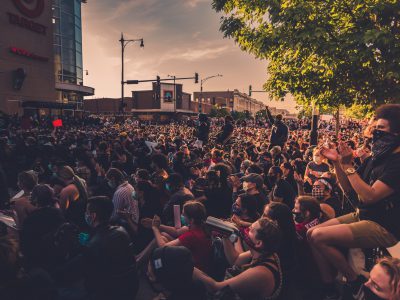
 Rachel Dodes with her husband and son.[/caption]
Rachel Dodes with her husband and son.[/caption]
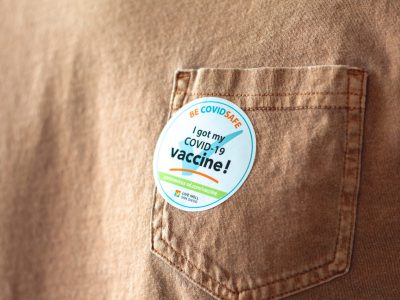
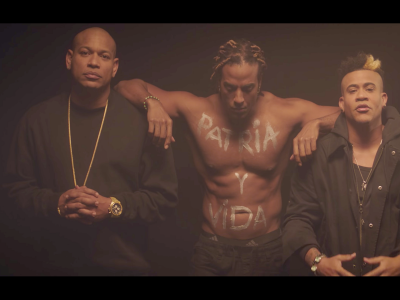
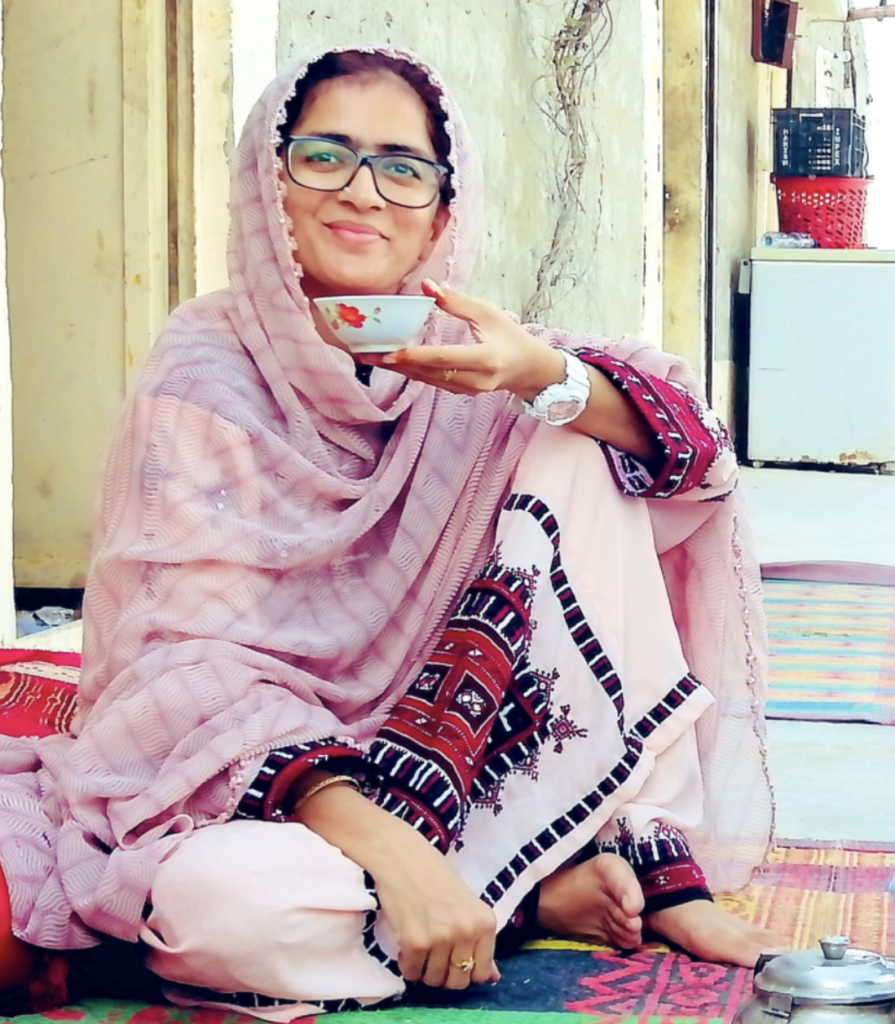 Granaz Baloch[/caption]
Granaz Baloch[/caption]
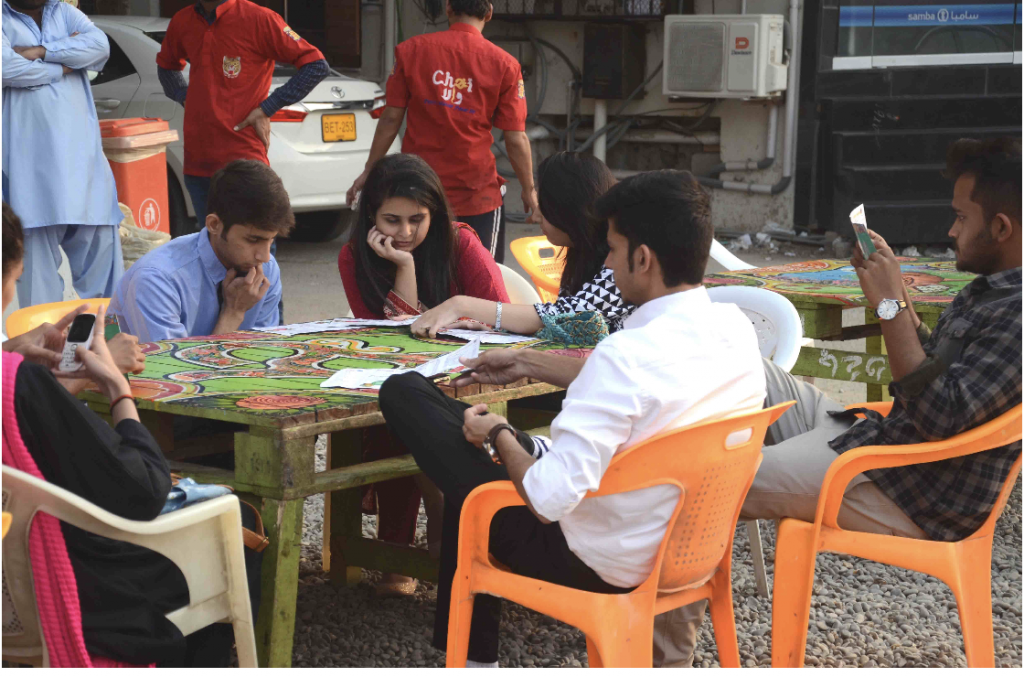 The scene at Chai Wala.[/caption]
The scene at Chai Wala.[/caption]
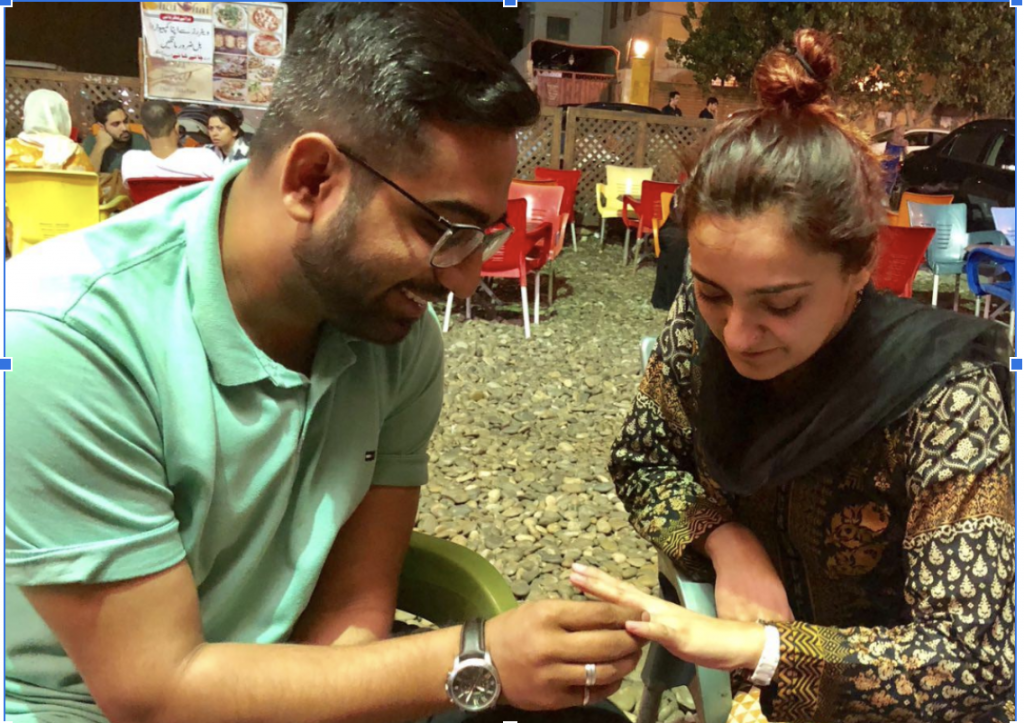 Shaheera Anwar getting engaged at a traditional dhaba in Karachi.[/caption]
Shaheera Anwar getting engaged at a traditional dhaba in Karachi.[/caption]
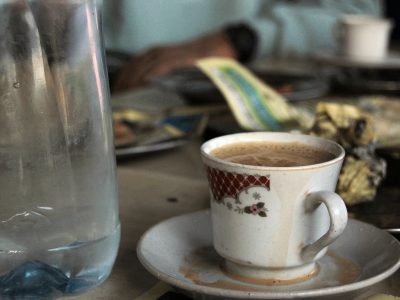

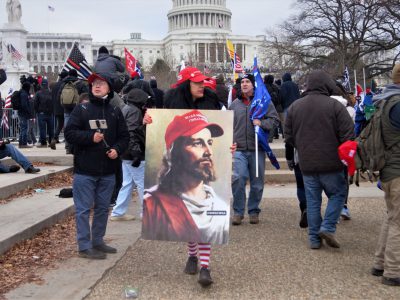
 Chicago FeelTank Parade of the Politically Depressed on July 25, 2006.[/caption]
A few months ago, I heard about a Feel Tank Toronto event at which the participants sang pop songs, repeating the line
Chicago FeelTank Parade of the Politically Depressed on July 25, 2006.[/caption]
A few months ago, I heard about a Feel Tank Toronto event at which the participants sang pop songs, repeating the line 